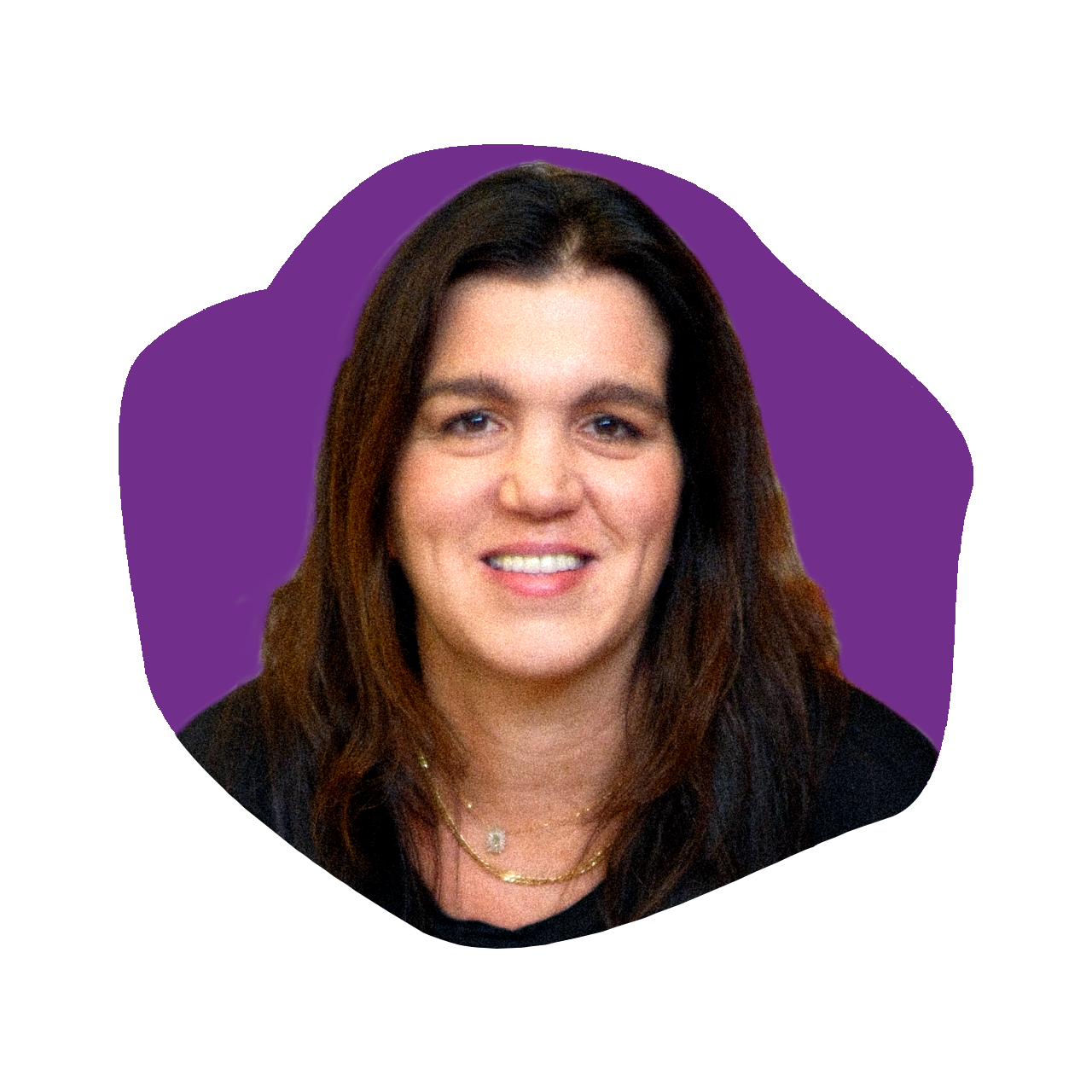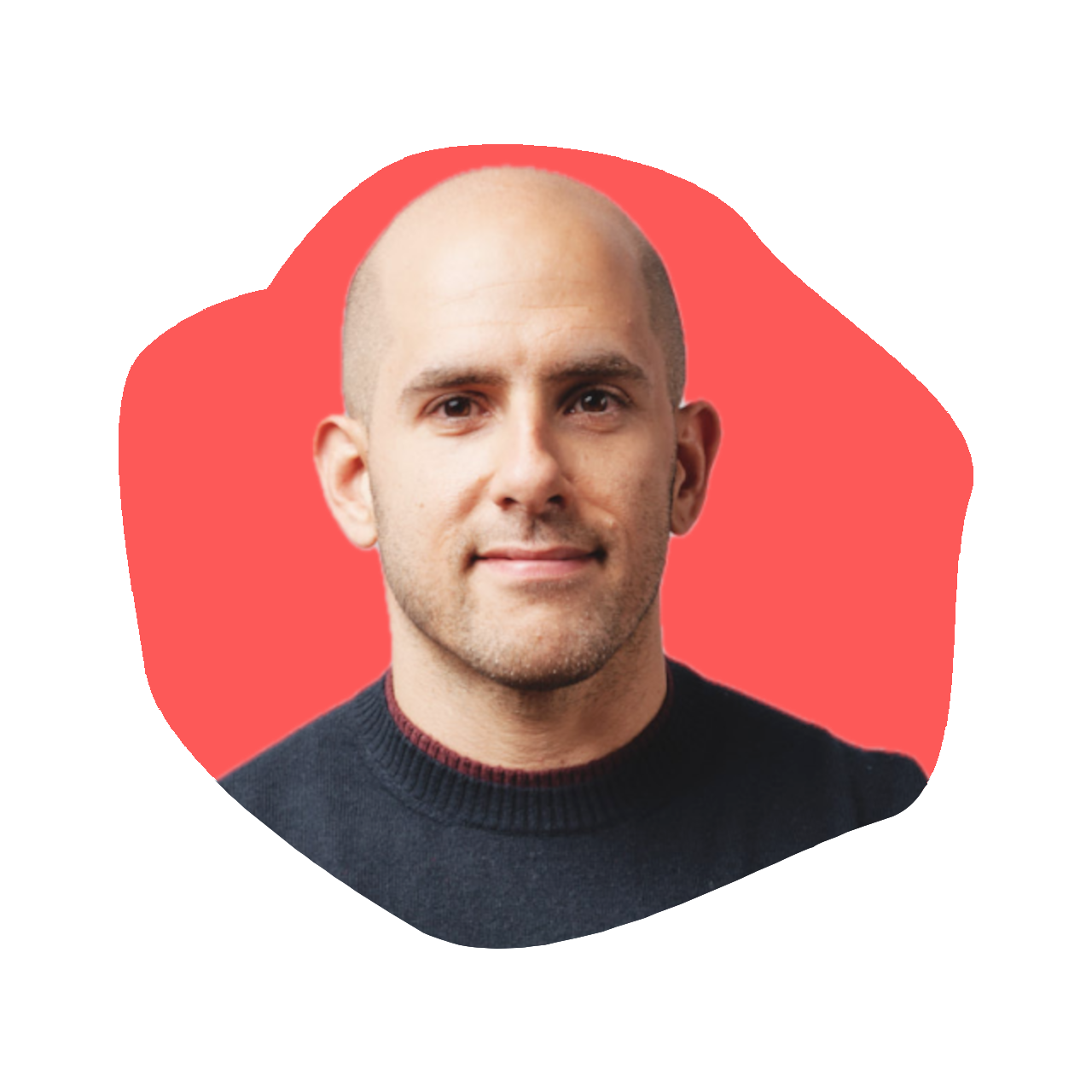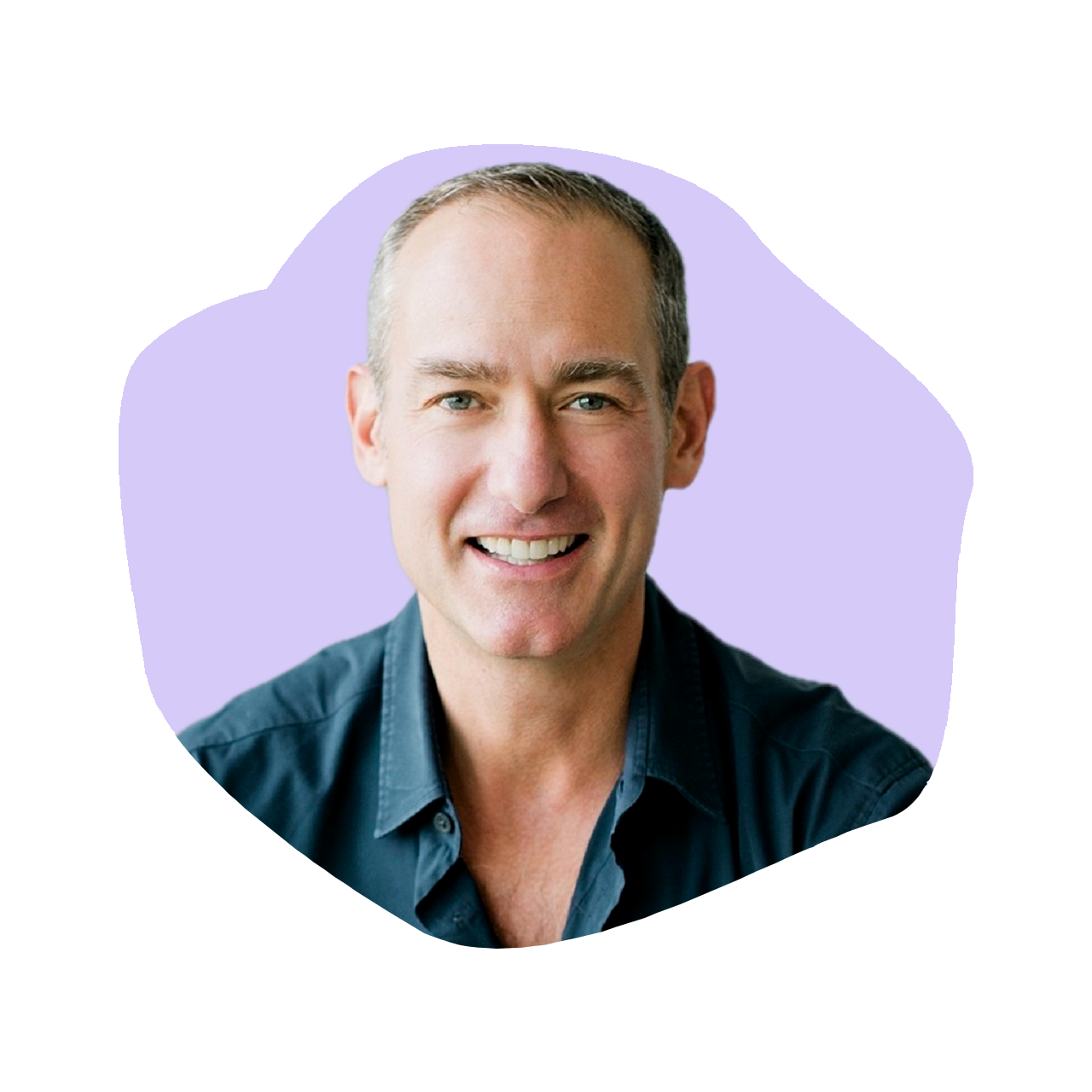Lauren Gropper, Founder and CEO of Repurpose
Episode 747

On this episode of The Kara Goldin Show, we’re joined by Lauren Gropper, Founder and CEO of Repurpose — the compostable household goods brand that’s changing the way we think about single-use products. What started with a vision to replace wasteful plastics with plant-based alternatives has grown into a national movement, with Repurpose products now found in over 20,000 retail locations including Target, Costco, Kroger, and Whole Foods. From compostable cups, plates, and cutlery to bamboo paper towels and BPA-free wine cups, Repurpose is proving that sustainability can be simple, stylish, and affordable.
In our conversation, Lauren shares how her early career in sustainable design and an eye-opening stint consulting in Hollywood inspired the launch of Repurpose. We talk about what it’s like to pioneer a new category, the challenges of educating consumers without overwhelming them, and how she’s built a mission-driven brand that has already replaced more than 727 million pieces of plastic. Lauren also opens up about the toughest challenges she’s faced as a founder, how she balances leadership with motherhood, and her bold vision for a world free from single-use plastics.
Whether you’re passionate about sustainability, curious about how to build a mission-driven CPG brand, or just looking for inspiration from a founder who turned an “aha moment” into a movement, this episode is packed with insights you won’t want to miss. Now on The Kara Goldin Show.
Resources from
this episode:
Enjoying this episode of #TheKaraGoldinShow? Let Kara know by clicking on the links below and sending her a quick shout-out on social!
Follow Kara on LinkedIn – Instagram – X – Facebook – TikTok – YouTube – Threads
Have a question for Kara about one of our episodes? Reach out to Kara directly at [email protected]
To learn more about Lauren Gropper and Repurpose:
https://www.linkedin.com/in/lauren-gropper-9a62791/
https://www.linkedin.com/company/repurpose-compostables/
https://www.instagram.com/repurpose/
https://repurpose.com/
Transcript
Kara Goldin 0:00
I am unwilling to give up, that I will start over from scratch as many times as it takes to get where I want to be. I want to be you. Just want to make sure you will get knocked down. But just make sure you don’t get knocked out, knocked out. So your only choice should be go focus on what you can control. Control, control. Hi everyone, and welcome to the Kara Goldin show. Join me each week for inspiring conversations with some of the world’s greatest leaders. We’ll talk with founders, entrepreneurs, CEOs and really, some of the most interesting people of our time. Can’t wait to get started. Let’s go. Let’s go. Hi everyone, and welcome back to the Kara Goldin show today. I’m joined by Lauren Gropper, founder and CEO of a incredible brand called Repurpose, the brand, leading the way in compostable household goods and making sustainability accessible for millions of consumers, and Lauren’s path into entrepreneurship is anything but traditional, from a career in sustainable design to an unexpected detour in Hollywood, she saw firsthand the waste created by so many consumers in everyday life, and decided to do something about it. So that spark led to Repurpose, which has since replaced hundreds of millions of pieces of plastic and is now sold and upwards of 20,000 stores nationwide. I can’t wait to hear all about how she is building her company, Repurpose and the challenges of scale, of scaling sustainability in a very much plastic dominated world, and her vision for what’s next. So Lauren, welcome to the show. It’s so nice to finally meet you.
Lauren Gropper 1:52
You too. Thank you so much for having me. This is a thrill. Thank you absolutely.
Kara Goldin 1:57
We were just connecting them. We’re both part of YPO, and you’re part of the YPO Malibu chapter. Very, very cool. So, so excited to make that connection. So for, for someone new to the brand, for to Repurpose, I actually have, if anybody’s watching it, I have my Repurpose cup right there. How do you how do you describe what the brand is all about?
Lauren Gropper 2:26
I think first, I sort of focus on the product itself, because I think the product and the mission and the brand are all so connected. Essentially, what we make are plant based, non toxic everyday household products, so easy swaps for everyday plastic disposables that you would find in your home. We want to be sort of the authentic, trusted brand in the space, so that you don’t have to think about it or second guess what you’re bringing into your home, and that using a disposable doesn’t have to feel bad. The thought always was in creating the brand was really coming from this Design Thinking point of view that, well, disposable doesn’t have to be bad if it’s made from something good. Could you make disposable to something good? And if it’s made from something good, therefore it doesn’t have to be a bad thing. So I think our products really do lead the way in terms of what our brand is all about, and it means just everyday simplicity, where you can feel good about what you’re buying and you can swap plastic out of your life. Definitely.
Kara Goldin 3:32
So you started in sustainable design, and what was the moment? Do you remember when you decided I’m just gonna go do this, yeah?
Lauren Gropper 3:43
Well, I was also a lot younger. We’ve been around 15 years, so at the time, I was just very, you know, you don’t know what you don’t know, right? And I was just a very passionate environmentalist. I still am, but I think I was on these sets, basically taking what I had done in the in the sustainable design world, building commercial buildings, and kind of applied the same principles to set design and set construction. And so we were going through quite a bit of effort to make a sustainable set. And then we would break for lunch, and I would eat my salad out of a giant plastic bowl using a plastic fork, drinking out of a plastic water bottle. And when you do that several times a day, day in, day out, while you’re trying to build a green set, it just sort of feels like maybe this is something we need to look at. And so I just went back to kind of sustainable design thinking, if we could really just make this out of something good that was non toxic, that could be degradable, that could be maybe made from something different than petroleum. This would be widely accepted and really change the world, because we could get rid of plastic as a terrible thing in our lives. So that was, that was the spark. Obviously, I had no idea what I was doing. I had no idea. Idea about how to build a consumer brand. I had no idea about how to make products. It was all a huge learning curve. But I just had all the kind of like that mix of like, naivete, overconfidence, all the things that you know young founders have just thinking, of course, I can do it. So I went, dove into the pool, and I guess never got out. I’m still here swimming.
Kara Goldin 5:25
I love it. I love it. So what were your first products when you launched 15 years ago?
Lauren Gropper 5:32
So we started, actually with one SKU, which note to all consumer goods founders start with more than one skew, or at least several versions of the one skew. We had a cup that was an alternative to, like a styrofoam coffee cup. It felt like Styrofoam in a way. It had this filmy exterior, and then it had a compostable lid so it could replace what people were buying for, sort of coffee cups for their homes, their offices on the go, and it felt like this super innovative solution. No one ever seen anything like it. So we got some early press because of that, and had an incoming call, actually, for like, a holiday special at Bed Bath and Beyond. That’s how that is. That was the first you said. We did an in and out of bed, bath and beyond. And then we took that one item, and that led to, obviously, many more, but that one item was what we were really pitching to many retailers with a hope and a prayer that they would take it. And we really spent the first many, many years trying to convince retailers that this should exist, and that, you know, sustainability had a place in the category as this was sort of before the mainstream sustainability movement.
Kara Goldin 6:49
Yeah. I mean, you’re essentially creating an entirely new category, and it’s and, you know, the interesting piece is that you’re not just trying to educate consumers, but you’re also, to your point, educating buyers to give you a shot on on the shelf. And for anyone who has never thought about that, who has never done that, we did it at hint as well. And it’s, it’s really tough, and it’s certainly, you know, oftentimes, I think if, if you have more competition when you’re trying to do things, it actually helps a category to scale. And certainly that probably helped you, helped, you know, Repurpose as you were starting to grow. So, how? So, how did you get retailers and consumers to take you seriously and know that this was a better thing? I mean, I would imagine that the fact that you’ve been in sustainable design and you could actually speak to how actually a cup, for example, is made, and what products to use in order to create a cup. So understanding the, you know, all the ingredients to, I guess, is the components to to that item is, is really key. But I’m curious how you got retailers and consumers to give it a shot.
Lauren Gropper 8:23
I think we really did address an unmet need, even 15 years ago. I think consumers were looking for something different because, and the reason we thought this would actually work is because, you know, at the time, I think I was pregnant with my first child, or almost pregnant, and I could see around me many, many friends and family members were having kids and basically detoxing their home. So they were using organic baby food. The whole house had organic food in it. They were using green cleaning products. They just didn’t want any toxins or anything like that around the baby or in the home. And so I think people were looking for, you know, alternatives to plastic that they could bring into their home as well if they were having if they were having a gathering or whatever. But it just didn’t really exist on a retail shelf. So it felt like there was a hole there and then when we could sort of use those adjacent categories as examples to the retailer saying, Here, look what happened when you put in green cleaning, or look what happened when you put in these other sort of Eco, organic, what have you, household products. These categories were transformed. And so, you know, we tried to use all the data we could. We were trying to be as compelling as we could. We explained actually a lot. There’s a lot of education here, as you were mentioning, that people aren’t aware of, for example, in a coffee cup, even in a everyday paper cup, which people think is sustainable because it’s paper, it’s lined with polyethylene, which is a petroleum derivative. And when it’s lined with polyethylene, recyclers cannot separate that lining from the paper, so nothing gets recycled. It’s all going to landfill. Now. Microplastics and the polyethylene that are seeping into your drink. So I think, you know, this is something we were kind of preaching way back then, way back when, and there were buyers that were interested or felt like, hey, you know what? If you pay the slotting fee, we’ll give you a shot, you know? So we sort of had to pare away a little bit at the beginning. Bit at the beginning, honestly, and prove that we could actually, you know, earn our keep and and pay the rent, so to speak. And it worked, because I think we were, we were addressing this unmet need so that one skew led to two, led to four, led to six, led to eight, etc. And we have continually tried to sort of innovate and stay ahead of that curve and just address these unmet needs, just to say, Hey, okay, is this something our consumer would be interested in and we listen to them as well. So, you know, what’s so great about the internet is you can, you can pull your customers and understand what they’re looking for and what they want. So we can, we can provide that for them. And now that we have the retail relationships, it’s a lot easier, but it’s still, I mean, even 15 years in, it’s still a challenge across the board to do everything right. On many failures. I mean, we’ve had skews that it’s like, Well, that didn’t work, you know, and we’ve had to pivot and adjust and continually iterate.
Kara Goldin 11:19
So when you develop products, you touched on this a bit. But I guess with your first product that you were developing that was had almost like the feel of styrofoam. Do you feel like you have to make a better version of an existing product versus an entirely new product, for example, like this is probably a bad example, but a cup, like getting people to move from a cup to something else, maybe you tried and they were not going to do that. So then you decided to go back to let’s just make that, that design better. I’d love to hear if you’ve encountered that.
Lauren Gropper 12:04
Yeah, I think what’s interesting is, I think the consumer is much more interested in using a better version that performs as well or better, and that they don’t have to pay more for. That’s that’s an easy adjustment. I think we see conversion happen quite easily there. There also is this mix, though, where you want to stay innovative, you want to be ahead of the curve, but if you’re too far ahead, it’s hard for people to make that connection and actually buy into that innovation if they don’t have all the education beforehand. So what we’ve seen from our growth is that, like we are doing better with just innovating or tweaking something that exists and making it better, or making it more sustainable and making it more accessible. I think what’s interesting is competitors that have sort of come and gone along the way may have like a super sustainable straw, let’s say, made out of whatever, some very innovative material, but it’s $1 a straw, and you’re paying $10 for a pack of 10, and people just won’t do that. They love that. It’s so innovative, but it’s got to be accessible. It has to perform. And maybe you don’t know what that innovative material, does it perform as well? It’s hard when you’re being when you’re on sort of that far end of the curve to really, like, hit all the metrics that people care about. I think people say, Oh, we love, for example, especially in sustainability. Oh, we want, you know, the most sustainable X, Y or Z. But when it comes to, well, you’ve got to pay this much more for it, or maybe it won’t work as well. I think that’s where you lose them. So I think one of the big reasons we’ve been successful is we’ve we’ve given performance and durability. We put that front and center. We put an accessible price point on it, and yes, it is sustainable and third party certified, and all the things. And when those three things work together, you have success in our category, when you when we try, when we’ve tried to be too innovative or and then, therefore the price is too high, or maybe the performance isn’t there. It just hasn’t worked. Definitely.
Kara Goldin 14:16
So what myths about compostable products frustrate you the most.
Lauren Gropper 14:24
I think the one, well, there’s a few. One myth is that they don’t work as well, you know. And I think that’s a myth across all eco friendly products, that you know, the efficacy isn’t there. Maybe in the beginning that might have been true, and that’s what sours people. But the fact is, is just not true anymore. I think you also have to think about what you’re comparing it to. So if you’re comparing a compostable trash bag to a like heavy duty plastic trash bag, yes, a heavy duty plastic trash bag is going to i. Uh, be a little more sturdy. And I think you have to know what you’re going into. A compostable trash bag is meant to break down. It is made of plant material. It is it is thinner. It can’t withstand as much as like a heavy duty plastic. But there’s so many applications that you need that compostable trash bag. So the myth that, like, you know, it doesn’t work, or, Oh, the bamboo toilet paper, or it’s so scratchy it’s not, I think it’s just an easy excuse for the naysayers so it works just as well or better. Another myth is, oh, these don’t actually break down. It does break down. They can break down. They’re third party certified to break down, and so I don’t know where that comes from. I think that’s coming from kind of different industries and naysayers, but, you know, the proof is in the certification. So I think what’s, what’s harmed the compostable industry in the past is, you know, greenwashing and fakes that aren’t really, you know, certified, and they claim, you know one thing or other, it’s just, it’s a plastic product that says it’s compostable. So unfortunately, there are bad actors, but now they’re regulations that require products like ours to be third party certified. And so you weed those, those companies out, those products out.
Kara Goldin 16:21
So I think consumers can be so overwhelmed by sustainability. You know, there’s also, I’ve heard aluminum is more sustainable. What are your thoughts on on aluminum?
Lauren Gropper 16:33
I think aluminum is great because it’s heavily recyclable, but I think the recyclability is a bit of a myth. Speaking of myths, I think people think that once it goes into their blue bin, or they’re, you know, they’re sorting it correctly, it gets recycled and just turns into something else. The fact is, about 6% of our recyclables actually get recycled, which is really sad. It used to be actually just sorted and then shipped to China, where it was, you know, turned into other products there. So plastic water bottles would turn into sort of plastic rope or fishing wire what have you. Now, it has been shipped off to Indonesia and Malaysia, but they’re refusing a lot of it so there, because there’s not a market for recyclable products. It’s often these products are burned or destroyed, some some are recycled, and aluminum is highly recyclable, so I think it’s great, but plastics less, so glass less. So, yeah, it’s it’s one of those big myths I I’m more concerned today, and I think one thing that we’re really trying to educate consumers on is microplastics. I think that’s it’s more concerning. I mean, the sustainability piece, obviously, is usually concerning, on the waste issue, but the amount of microplastics in our environment, in our homes, in our blood, anything we can do to avoid microplastics, I think is, is huge and will matter collectively. So that’s something we’re focused on and trying to educate consumers on about our products, that our products don’t break down into microplastics.
Kara Goldin 18:13
Yeah, definitely. I you know, just to add to the aluminum piece that the the aluminum is is lined with plastic, and most of those aluminum bottles, and we and I didn’t believe it, but actually my husband, who has he loves to take things apart, so he took apart a bottle and actually melted down the plastic, because a lot of people don’t realize there’s plastic on the top of many of those aluminum water bottles. And there was twice as much plastic in the top of an aluminum water bottle as there are in plastic bottles and so, so it’s crazy, like, that’s like, one of the myths that I have thought and to your point, you know the whole recycling process. You know, so many consumer so many consumer products companies just believe. Like, well, you know, state by state laws and companies that are handling these recycling and you know what ends up happening. But I think it’s just it, it’s everyone’s issue, right? And if they’re sending it across the world and it’s burned, I mean, it’s, it’s a problem, right? Or it can’t be recycled because the recycling company can’t do that. So I think that it’s, you know, it’s something that I think most consumers want to do the right thing, but there’s just, it’s so confusing, right? It’s so
Lauren Gropper 19:49
confusing, it’s so overwhelming. I think this is why we’re just trying to be like a simple solution that you don’t have to feel guilty or bad about, that you can use. Us and go on about your day and make a simple swap and not fret that. You know, we’re putting out something bad into the world, like this is what we care about. I personally care about this. Our entire team cares about this, about putting out a healthy, non toxic, you know, sustainable product into the world. It’s hard. It’s really hard to do, to have a product that, you know, meets all the needs and is the right price, and you know, is a brand that stays ahead of the curve. It’s it’s a challenge, because I think, as a sustainable product, you’re held to a different standard. There’s just so much education that is expensive to do.
Kara Goldin 20:44
Yeah, definitely. So you started Repurpose 15 years ago. If you had to say there was a moment in the I always think of it as a timeline where you thought, Okay, this is gonna make it. Was there like one, like moment when you can say, oh my gosh, finally, someone’s paying attention. Was it getting into a major retailer? Was it press? Was it, you know? What was it that a milestone, whether it was revenue or EBITDA or number of employees, what was that milestone? When you said, wow,
Lauren Gropper 21:23
we’ve made it. I still am like, have we made it? I think really it was, I don’t know if you remember, it was probably 2016 or so. There was a straw pictured in a turtle’s nose in a National Geographic. And the image went viral, and we had about a year prior, launched compostable straws, not paper. They were actually made a corn and cassava based product, but we had straws, and so we were being called by every major retailer in the US. Do you have straws? Can Can you make straws? And we were like, yep, we do. And we also have plates and we also have cups. And that was kind of the moment that we went from kind of like trying to knock on every door to being in the income and call business. And that felt to me like, Okay, people are really sick of plastic. They want something different. If a straw is what it needs to be amazing. And that was really the moment. And we got into, oh God, 1000s of retail doors from because of that. And that was, that was, like about a six month process. But I do remember it was 2016 or 2017 thinking, Okay, wow, we just, we got it for got it from my point of view, when, when people are aware of the problem, or they really, you know, and there is a solution in front of, you know, sitting in front of them, that they don’t have to pay more for. There’s not a lot of, you know, obstacles in the way of them wanting to buy the product, liking it and then buying it again. So awareness is key.
Kara Goldin 23:04
So regulation around plastics is evolving, changing. But what role do you see policy playing in pushing this industry forward and or backwards? Right? So I think you know with every industry, I think you know whether it’s tariffs or you don’t know who to call anymore to have this discussion. I mean, there’s we’ve heard it all on this, on this podcast, but what would you say to how do you see policy really playing and pushing this industry forward.
Lauren Gropper 23:44
So currently, policy is being enacted at a state by state level, which is not great for a national brand, because it’s very hard to have labeling or certain, you know, requirements for one product in one state that is different in another state, it’s very challenging, especially for smaller brands like us. I think what I’m hopeful for is national legislation that, you know I’m helping to advocate for, that will allow just a broad stroke kind of regulation on labeling and requirements for combustible products, recycling, etc, that also provides more income for infrastructure that helps to recycle or compost products. So you may have heard of these. EPR laws, extended producer responsibility. They’re different state by state, it would be so wonderful to have a national EPR standard, or one that really helps incentivize composting, recycling. It’s just all different state by state, and there’s so many different advocacy groups in each state, kind of advocating for different things, which. Makes it difficult, so I’m hoping for a national solution and working on that.
Kara Goldin 25:05
So last question, on a personal note, what’s your favorite product in the Repurpose lineup, and maybe the one that you tend to reach for the most often?
Lauren Gropper 25:18
It’s without a doubt, we have stemless wine glasses, and so they’re very attractive. They they’re sort of a rounded bottom, very cool. They look amazing. They feel great in your hand. They’re they come in very handy when you’re having people over and don’t want to use wine glasses. You could put anything in them, obviously, and they’re a huge hit for our brand. So love them. Can’t recommend them enough. I think stemless wine glasses all the way.
Kara Goldin 25:48
That’s awesome. Well, Lauren, thank you so much for joining us and sharing the Repurpose story. And I love the journey how you’ve changed careers and did something that really helped enable another industry to do better. So for everyone listening, you can learn more about Repurpose.com. Also follow Repurpose and connect with Lauren as well on social. And if you enjoyed this episode, be sure to subscribe, leave a review, tell all your friends, buy from Repurpose. So thank you so much Lauren for coming on. I really appreciate it. Thanks again for listening to the Kara Goldin show. If you would please give us a review and feel free to share this podcast with others who would benefit. And of course, feel free to subscribe so you don’t miss a single episode of our podcast, just a reminder that I can be found on all platforms. At Kara Goldin, I would love to hear from you too. So feel free to DM me, and if you want to hear more about my journey, I hope you will have a listen or pick up a copy of my Wall Street Journal, best selling book. Undaunted, where I share more about my journey, including founding and building hint, we are here every Monday, Wednesday and Friday. Thanks for listening, and goodbye for now.
People Also Liked

755
Gabi Day: Founder & CEO of Bright Body

754
Nicolas Jammet: Co-Founder & Chief Concept Officer of Sweetgreen

753
Katya Eckert: Founder & CEO of A DOMANI

752
Mark Rampolla: Author of An Entrepreneur’s Guide to Freedom and Founder of ZICO

751
Deborah Pagani: Founder of Deborah Pagani Beauty




